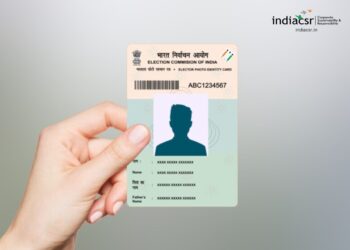Imagine this: You’re at the store, buying your favorite coffee or grabbing a quick snack. The cashier hands you a receipt, which you absentmindedly stuff into your pocket or wallet without a second thought. But have you ever wondered about the paper you just touched? Surprisingly, that little slip of thermal receipt paper may carry more than just proof of purchase — it could also expose you to chemicals that can disrupt your hormones, affect your health, and even impact your future. It sounds dramatic, but the science behind it is worth knowing, especially since we encounter these receipts all the time.
In this article, we’ll take you behind the scenes of thermal receipt paper, revealing what makes it potentially harmful, how it can affect your health, and some easy tips to protect yourself.
Chapter 1: What Makes Thermal Receipt Paper Special? (Hint: It’s Not Ink)
You’ve probably noticed that receipts from stores, restaurants, and ATMs don’t smudge like regular paper. That’s because they don’t use ink. Instead, thermal receipt paper is coated with a chemical layer that reacts to heat, instantly creating those familiar black-and-white prints when it runs through a thermal printer. This no-ink technology is convenient, fast, and cheaper for businesses.
Sounds harmless, right? Well, here’s where things get interesting. That special coating often contains Bisphenol A (BPA) or Bisphenol S (BPS) — chemicals that can mess with your hormones. If these names sound familiar, it’s because BPA has been at the center of health controversies for years, and BPS, which was introduced as a “safer” alternative, isn’t exactly innocent either.
To understand the full technical breakdown of thermal paper compared to regular paper, check out this deep dive here: Understanding the Difference Between Thermal Paper and Normal Paper.
Chapter 2: What’s the Big Deal with BPA and BPS?
Now, you might be wondering: “Why should I care about BPA or BPS on a receipt?” After all, we’re talking about paper, not food. The issue is that both BPA and BPS are endocrine disruptors. That’s a fancy way of saying they can mimic hormones in your body, especially estrogen, and throw your system out of balance. Hormones are like your body’s internal messaging system, and messing with them can lead to all kinds of issues.
Here are just a few of the potential health concerns associated with BPA and BPS exposure:
- Reproductive problems: Because BPA mimics estrogen, it can disrupt reproductive systems in both men and women. It’s been linked to fertility issues, hormonal imbalances, and developmental problems in children.
- Cancer risks: BPA exposure has been associated with an increased risk of hormone-related cancers like breast and prostate cancer.
- Developmental issues in children: Pregnant women who are exposed to BPA could unknowingly pass it on to their unborn child, which may affect the baby’s development.
- Heart disease: Some studies have found that BPA exposure could increase the risk of cardiovascular problems, including high blood pressure and heart disease.
The scary part? These chemicals don’t just stay on the paper. They can transfer to your skin — and from there, into your body.
Chapter 3: How Does BPA/BPS Get Into Your System?
It’s simple: You touch a receipt, the chemicals on the surface of the paper stick to your skin, and from there, BPA or BPS can be absorbed into your bloodstream. Sounds creepy, right? But it happens more easily than you’d think.
Here are some factors that can increase your exposure:
- Sweaty or oily skin: If your skin is moist, whether from sweat or oils, it makes it easier for BPA or BPS to seep through.
- Using hand sanitizer or lotion before touching a receipt: Some studies have found that using these products before handling receipts can increase the rate at which chemicals are absorbed.
- Prolonged contact: The longer you hold or touch a receipt, the more of these chemicals may transfer to your skin.
You’re probably thinking, “How big of a deal is this?” Well, it might depend on how often you come into contact with receipts. Research has shown that people who handle receipts frequently, like cashiers, can have significantly higher levels of BPA in their bodies compared to those who rarely do. So if you’re someone who’s constantly dealing with receipts, this might be more of an issue for you than for the occasional shopper.
Chapter 4: Why Are We Still Using BPA and BPS in Receipts?
You might wonder why BPA and BPS are still used in receipt paper despite the known risks. The truth is, they’re cheap and effective. BPA has been used in plastics, resins, and thermal paper for decades, and while many manufacturers are starting to phase it out, finding a completely safe and equally effective alternative is still a challenge.
BPS was introduced as a “safer” option after the controversy around BPA, but studies have shown that BPS may be just as problematic. Unfortunately, it seems that replacing one harmful chemical with another hasn’t solved the issue.
Chapter 5: The Long-Term Effects of BPA/BPS Exposure (It Adds Up)
While touching a few receipts here and there probably won’t cause immediate harm, repeated exposure — like if you work in retail or handle receipts regularly — can build up in your system over time. And it’s this accumulation that can lead to health issues down the line.
BPA doesn’t just vanish once it enters your body. It can accumulate and disrupt your endocrine system over time, leading to long-term effects. For instance:
- Increased cancer risks: Because BPA mimics estrogen, it can promote the growth of certain types of cancers, particularly breast and prostate cancer.
- Fertility problems: Long-term exposure has been linked to reproductive health problems, including hormonal imbalances and reduced fertility.
- Fetal development risks: Pregnant women who handle receipts frequently could be putting their unborn child at risk of developmental issues due to BPA exposure.
For more information on how thermal paper receipts change over time, including why they fade and tips on how to restore them, check out this comprehensive guide: Receipt Paper: Why It Fades and How to Restore It? 2024 Comprehensive Guide.
Chapter 6: How to Protect Yourself from Thermal Receipt Exposure
So, what can you do to protect yourself? Thankfully, there are some easy steps you can take to reduce your exposure to BPA and BPS from thermal receipts:
- Go paperless: More businesses are offering digital receipts these days, which is not only more convenient but also completely eliminates the need to handle thermal paper. Next time you’re at the store, ask if they can send your receipt via email or text instead.
- Handle receipts with care: If you do need a printed receipt, try not to hold it for too long or touch it unnecessarily. Avoid crumpling or rubbing the paper, as this can increase the release of BPA/BPS.
- Wash your hands after handling receipts: A simple but effective way to reduce exposure is by washing your hands after touching a receipt. This prevents BPA or BPS from transferring from your skin to your food or other personal items.
- Avoid using hand sanitizer before handling receipts: Hand sanitizers can break down the chemicals in the paper, making it easier for BPA or BPS to be absorbed into your skin. If you need to use hand sanitizer, do so after handling a receipt, not before.
- Store receipts separately: Don’t keep receipts in your wallet or purse, where they can come into contact with personal items like money, food, or your phone. If possible, store them in a separate compartment or a small envelope.
- Choose BPA-free alternatives: Some stores and companies are starting to use BPA-free thermal paper. However, be aware that “BPA-free” doesn’t always mean “safe,” as many BPA-free papers use BPS instead. If you’re concerned, ask about the type of paper being used or opt for digital receipts.
- Use gloves if you handle receipts regularly: If your job requires you to handle receipts frequently, consider wearing gloves to reduce contact. This can be especially helpful for cashiers and others who may have higher exposure levels.
Chapter 7: Are There Safer Alternatives on the Horizon?
Thankfully, the future looks brighter when it comes to safer thermal paper options. Many companies are now exploring phenol-free thermal paper, which doesn’t rely on harmful chemicals like BPA or BPS. This alternative is not only safer for people but also more environmentally friendly.
Additionally, the shift towards digital receipts is growing. More and more businesses are offering e-receipts as a way to reduce paper waste and provide customers with a more convenient, eco-friendly option.
While we may still have some way to go before these alternatives become the norm, the progress being made is encouraging.
Chapter 8: Conclusion: The Power of Small Changes
Thermal receipt paper might seem like an insignificant part of your daily life, but its impact on your health is worth considering. With BPA and BPS lurking in these tiny paper slips, repeated exposure could potentially lead to long-term health issues. But the good news is that with a few simple changes — like opting for digital receipts, handling paper with care, and washing your hands after contact — you can protect yourself and reduce your risk.
For more insights into thermal paper and related products, be sure to check out www.sunavin.com, where we offer a range of solutions, including barcode printers, thermal labels, and more.






















